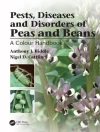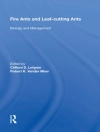Following a description of the various sources and factors influencing the contents of heavy metal pollution in post-catastrophic and agricultural soils, subsequent chapters examine soil enzymes and eggs as bio-monitors, lead adsorption, the effects of arsenic on microbial diversity, and the effects of Mediterranean grasslands on abandoned mines. A third section focuses on the adaptation strategies used by plants and bacteria, such as Pinus sylvestris in industrial areas, and the rhizosphere in contaminated tropical soils and soil treated with sewage sludge. Further topics addressed include strategies of bioremediation, e.g. using transgenic plants as tools for soil remediation.
This new volume on heavy metals in soil will be of interest to researchers and scholars in microbial and plant biotechnology, agriculture, the environmental sciences and soil ecology.
Inhoudsopgave
Sources of heavy metals in soils.- Monitoring heavy metals in soils.- Adaption strategies of plants and bacteria in response to heavy metals.- Approaches for the remediation of contaminated soils.- Genetic engineering – a tool to cleaning up contaminated.












